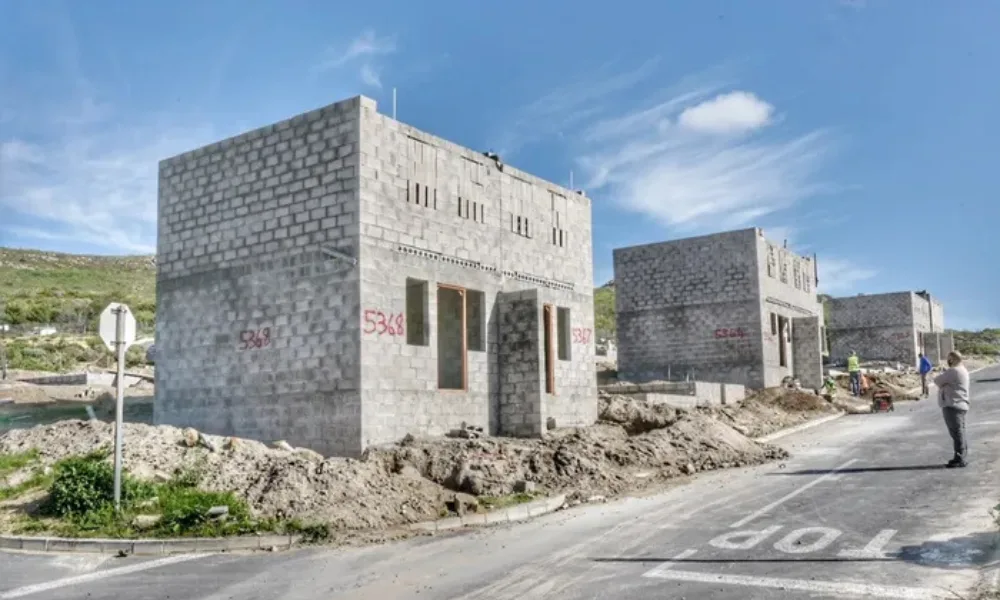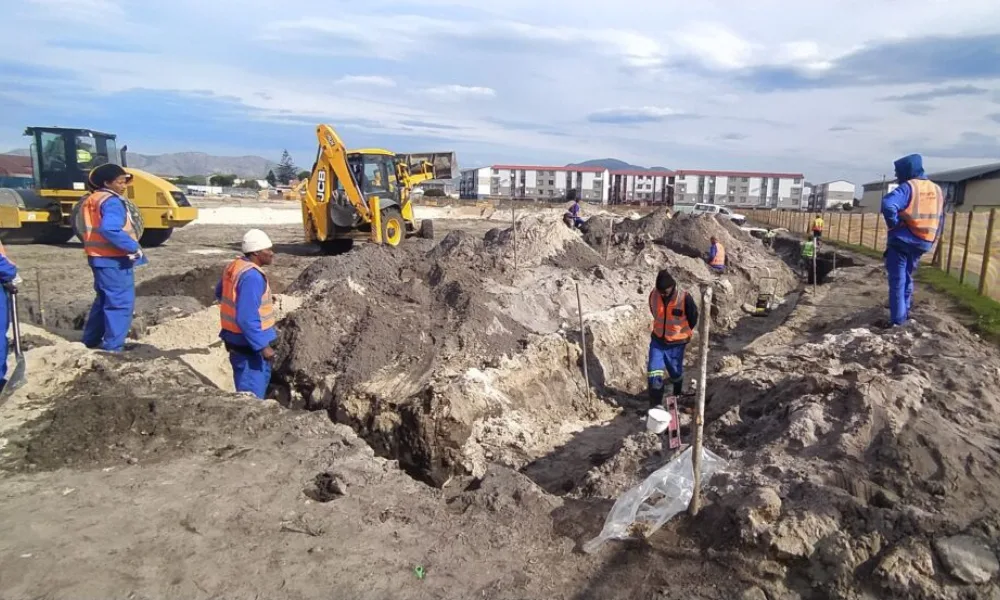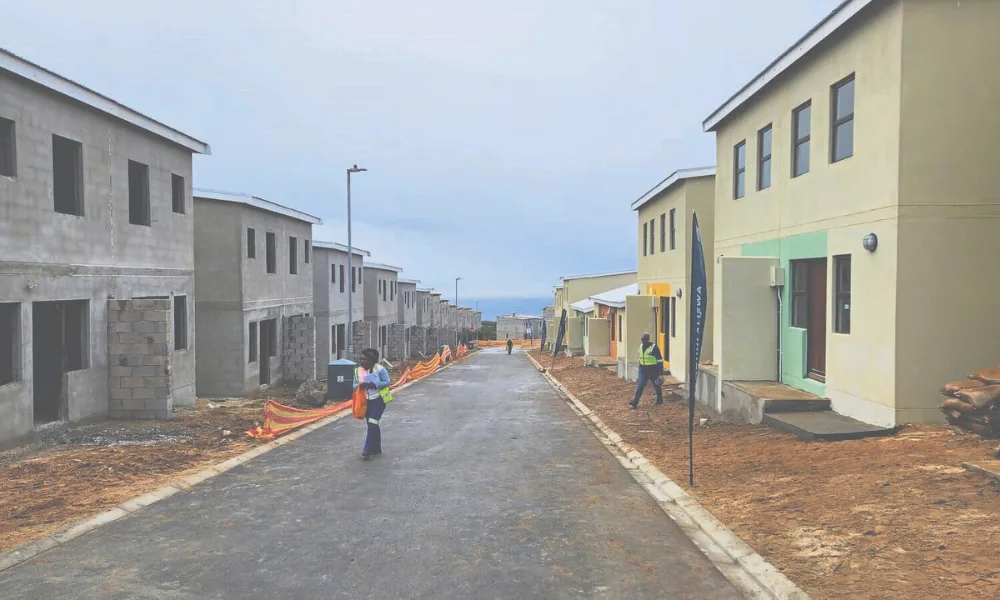Introduction
In the vibrant and ever-evolving city of Cape Town, the demand for sustainable and efficient housing solutions has never been more pressing. With a mission to close the historic housing backlog, the Housing Development Department of the City of Cape Town set out to redefine its approach to project execution, information management, and stakeholder collaboration. The catalyst for this transformation was a bold commitment to digital change through Autodesk Construction Cloud (ACC).
At the heart of this digital journey is Nicél Muller, a forward-thinking Construction Project Manager, who recognised early on the potential of ACC to revolutionise the way the city delivered its housing projects. In addition to leading this digital shift, Nicél has been honoured as one of Autodesk’s prestigious “40 Under 40 Construction Champions” – a coveted accolade that celebrates the industry’s most promising young leaders driving innovation on a global stage. This recognition not only underscores her personal achievements but also elevates the entire team and the City of Cape Town in Africa, setting a benchmark for excellence and forward-thinking innovation.
Having laid the foundation with a clear vision, the department embarked on a journey to overcome longstanding challenges and achieve ambitious strategic goals. Let’s delve into how they tackled these challenges head-on, redefined their processes, and ultimately transformed urban housing delivery for Cape Town.
Customer Challenges
For the Housing Development Department, the path to digital transformation was fraught with operational challenges that had long hindered progress. Prior to adopting Autodesk Construction Cloud, the department grappled with several key issues:
- Fragmented Information Flow:
Project data was scattered across multiple platforms and physical media. Nicél recalls, “We had a contract document that would be circulated on USBs driving all over the city for signatures—from the Civic Centre to Plumstead to Tyger Waterfront. This process could take up to two weeks, not to mention the difficulties of transferring large files via email.” Such manual, cumbersome practices not only delayed decision-making but also led to outdated information being used at critical project stages. - Inconsistent Stakeholder Collaboration:
The traditional system created a barrier between internal city officials and external consultants or contractors. Each stakeholder maintained their own systems, making it nearly impossible to establish a unified, collaborative space. Nicél highlighted the disconnect: “There was a wall between us and our external partners, which meant that real-time insights into project progress were a constant challenge.” - Risk of Data Loss and Compromised Integrity:
Due to lengthy project timelines and frequent personnel changes, critical information was often lost. “Essential documents could disappear during staff transitions, which not only jeopardised our projects but also exposed us to legal vulnerabilities,” she explains. This risk was further compounded by consultants storing data on disparate servers beyond the city’s control. - Inefficient Communication and Reporting:
Inefficiencies in data sharing resulted in significant delays, particularly in contract approvals and financial reconciliations. “Preparing final accounts and collating information was an endless process, reliant on multiple iterations of emails and physical document transfers,” Nicél notes, emphasising the urgent need for a streamlined, single platform.
These challenges necessitated a comprehensive digital solution to unify operations, safeguard intellectual property, and expedite the housing delivery process. With a clear vision in mind, the department set out to redefine its operational framework by embracing modern technology.
Project Goals
In response to these challenges, the leadership of the City of Cape Town’s Housing Development Department established ambitious goals centred on the full integration of Autodesk Construction Cloud. These objectives were designed to address operational inefficiencies while supporting broader strategic imperatives:
- Enhance Collaboration Across Stakeholders:
A primary goal was to bridge the communication gap between internal city officials and external partners, creating a unified platform for real-time collaboration. “We needed a better collaborative space where internal teams and external suppliers could work together seamlessly,” Nicél explained, emphasising the need to dismantle long-standing barriers. - Own and Secure Intellectual Property (IP):
With data being a critical asset, the department was determined to secure and control its project information. By moving away from paper-based systems, the aim was to implement a robust digital repository that ensured continuous access to, and protection of, the city’s intellectual property. - Streamline Operations and Improve Efficiency:
Timesaving was crucial. The department sought to reduce delays associated with manual processes, shifting from tasks that previously took weeks to those that could be completed in hours or even minutes. - Strengthen Legal and Contractual Compliance:
A secure and traceable digital system was needed to enforce contract terms and protect the city against legal disputes.
“In one instance, we were able to terminate a consultant by using clear evidence stored on ACC,” recalls Nicél, underscoring how the digital audit trail bolstered legal and contractual integrity. - Facilitate Real-Time Reporting and Decision-Making:
While the department is still in the process of developing comprehensive dashboards, they have already streamlined the multiple spreadsheets previously submitted by project managers into a single, cohesive reporting system. “Imagine opening your laptop to find all your reporting data consolidated in one place. This is the direction we’re heading,” she shares, highlighting the transformative potential of real-time data integration. - Drive a Culture of Digital Innovation:
Beyond immediate operational needs, the long-term vision was to cultivate a digital-first culture. The department recognised that embracing innovative technologies was essential for keeping pace with modern urban development challenges.
These goals formed the backbone of a strategy that would not only enhance efficiency but also fundamentally transform how the city managed its projects.
Design Solutions
To bring these ambitious goals to fruition, the City of Cape Town partnered with Baker Baynes, trusted experts in digital transformation, to design and implement a comprehensive solution using Autodesk Construction Cloud. Several key strategies and design innovations were integral to this transformation:
An Intended Phased Roll Out Strategy That Evolved
The digital transformation was initially planned to be executed in carefully planned phases. The original intention was to pilot one or two projects, one in planning and one in execution, to test new processes and workflows. “We thought we’d start with one or two projects, a pilot in planning and one in execution,” recalls Nicél. However, as soon as the benefits of Autodesk Construction Cloud became apparent, multiple projects were swiftly added. This evolution from a cautious phased roll-out to a rapid expansion allowed the team to quickly fine-tune workflows, identify challenges, and customise the platform to meet the city’s specific needs on a much larger scale.
A Unified Platform for Data and Communication
At the core of the solution was the integration of three Autodesk products:
- Autodesk Docs: Serving as the central document management system, Autodesk Docs provided a secure repository where all project documentation was stored and shared.
- Autodesk Build: This tool transformed on-site activities by enabling real-time document sharing and inspection uploads, eliminating delays inherent in traditional methods.
- BIM Collaborate Pro: Although still in the early stages for the city, this tool promised to revolutionise design collaboration by integrating clash detection and real-time model updates.
Nicél was enthusiastic about the transformation from a “Frankenstein of different systems” to a cohesive digital ecosystem. “This isn’t about mix-and-match; this is where our operations happen,” she stated, emphasising that the unified platform ensured all stakeholders had access to the most up-to-date information, thereby eliminating delays and errors.
Customised Training and Onboarding
Recognising that technology is only as effective as the people using it, Baker Baynes provided extensive training and skills development. The training was designed to be incremental and hands-on, delivered in “bite-sized chunks” that allowed team members to adapt to the new system while balancing their other responsibilities.
“Baker Baynes took us by the hand, setting up piece-meal goals for folder structures, workflows, and naming conventions, which made the process much more manageable,” explains Nicél.
Training sessions were conducted both in groups and on a one-to-one basis, ensuring that everyone, from senior management to on-site inspectors, was comfortable with the new tools. Regular sessions, including weekly meetings over several months, fostered a strong foundation of trust and collaboration across the team.
Integrating Change Management and Process Innovation
Transitioning to a new system often encounters resistance. Many external consultants initially hesitated to adopt the new platform, preferring the familiarity of their established methods. To overcome this, the implementation strategy incorporated both incentives and firm contractual mandates. Consultants were offered streamlined processes and quicker response times as incentives, while new work packages were introduced with ACC specifications as a mandatory requirement, ensuring that everyone understood the importance of the digital transformation.
Enhancing Reporting and Decision-Making
While the department is still in the process of developing comprehensive dashboards, the adoption of ACC has already enabled them to streamline the multitude of spreadsheets that project managers previously submitted for reporting.
“Instead of dealing with multiple Excel sheets, we’re now consolidating our data into one cohesive reporting system,” explains Nicél. This improved mechanism has led to more accurate and timely decision-making, reducing delays and errors in project execution.
Legal Safeguards and IP Protection
The secure digital ecosystem also had a profound impact on the city’s legal and contractual frameworks. With all project data stored on ACC, the department gained a reliable audit trail that protected its intellectual property and reinforced contractual compliance.
“When a consultant tried to delete information to withhold data, we could quickly identify the issue and take swift legal action,” recalls Nicél.
This capability has empowered the legal and compliance teams to support even the most challenging decisions, such as terminating a consultant when necessary.
Business Benefits
The transformation journey has yielded a wealth of benefits that extend well beyond operational improvements. Integrating Autodesk Construction Cloud into the day-to-day operations of the City of Cape Town’s Housing Development Department has delivered several key business benefits:
Dramatic Efficiency Gains
One of the most significant benefits has been the drastic reduction in time required for routine administrative tasks. Whereas transferring contract documents between offices used to take up to two weeks, the digital system now allows for near-instantaneous sharing. “What used to take a week, or more is now a simple drag-and-drop process,” notes Nicél. This efficiency has a ripple effect, accelerating overall project timelines and enabling the city to address the housing backlog more rapidly.
Enhanced Data Integrity and Security
By moving to a centralised digital platform, the department has significantly minimised the risk of data loss and tampering. With all critical documents securely stored on ACC, the integrity and accessibility of project information are assured.
“The risks of losing vital information due to outdated systems have been greatly reduced,” says Nicél. This level of security is crucial not only for operational success but also for mitigating legal risks.
Streamlined Communication and Collaboration
The unified platform has revolutionised communication between the department and its external partners. Instead of juggling multiple emails and disparate documents, all communications now take place within a single, comprehensive system. Real-time updates have enabled the department to resolve issues swiftly and ensure that every stakeholder is on the same page.
“It’s like having a built-in CSI unit within our system, ensuring that every action is tracked and every problem is addressed immediately,” enthuses Nicél.
Financial Savings and Risk Mitigation
Operational efficiencies have translated directly into financial savings. Reduced administrative overhead, quicker contract approvals, and enhanced reporting have all contributed to significant cost savings. Furthermore, the ability to promptly terminate underperforming consultants, armed with irrefutable digital evidence, has helped the city avoid costly legal disputes and mitigate financial risk.
A Culture of Digital Innovation
Perhaps the most transformative benefit is the cultural shift within the department. The move from traditional, paper-based methods to a digital-first approach has fostered a mindset of continuous improvement and innovation. “Now, when I open my laptop, I want the platform to guide my day rather than an overflowing inbox,” muses Nicél. This shift not only optimises day-to-day operations but also positions the city as a leader in digital innovation.
Strengthened Stakeholder Relationships
Improved transparency and streamlined processes have bolstered relationships with external consultants and contractors. Despite initial resistance, many partners now appreciate the benefits of faster invoice processing, real-time feedback, and clear performance metrics. “Even the most reluctant partners now see the value in joining us on this digital journey,” observes Nicél, highlighting the positive impact on overall project outcomes.
Conclusion
The transformation journey of the City of Cape Town’s Housing Development Department, from a fragmented, paper-based system to a cutting-edge digital ecosystem, demonstrates the power of Autodesk Construction Cloud and the expert support of Baker Baynes. What began as an ambitious experiment to close a housing backlog has evolved into a comprehensive, streamlined operation that enhances efficiency, secures vital project data, and fosters a culture of innovation.
Nicél Muller’s visionary leadership, underscored by her recognition as one of Autodesk’s esteemed “40 Under 40 Construction Champions,” has not only modernised the way the city manages its construction projects but also set a new standard for public sector digital transformation. The “40 Under 40 Construction Champions” accolade celebrates the industry’s most promising young leaders, recognising their ability to drive change and innovate in an ever-evolving landscape. Nicél’s inclusion in this elite group is a testament to her pioneering approach and further elevates the prestige of Cape Town’s transformation journey.
Looking ahead, the department envisions a future where Autodesk Construction Cloud becomes the de facto system for every project.
Ensuring that each step from planning to execution is underpinned by robust, real-time data and seamless collaboration. In Nicél’s own words, “My advice to any owner operator or developer is to go for it. Assess your business, see what will push you forward, and embrace digital transformation. It isn’t just a change in technology; it’s a change in how we work, how we deliver, and ultimately, how we build a better future.”
As the city continues its journey towards digital excellence, the legacy of this transformation will be felt for generations, setting a benchmark for efficiency, innovation, and visionary leadership in the construction industry.







0 Comments